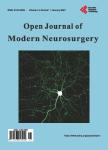A Rare Cause of Hemiparesis: Intracranial Mycotic Aneurysm—A Case Report, and Review of the Literature
A Rare Cause of Hemiparesis: Intracranial Mycotic Aneurysm—A Case Report, and Review of the Literature作者机构:Service de Neurochirurgie de l’Hô pital Des Spécialités Rabat Morocco Faculté de Médecine et de Pharmacie Université Mohammed V Rabat Rabat Morocco
出 版 物:《Open Journal of Modern Neurosurgery》 (现代神经外科学进展(英文))
年 卷 期:2021年第11卷第3期
页 面:171-179页
学科分类:1002[医学-临床医学] 100214[医学-肿瘤学] 10[医学]
主 题:Mycotic Aneurysm Endocarditis Endovascular Case Report
摘 要:Background:The intracranial mycotic aneurysm is known to be a rare complication of infective endocarditis and it is more clinically challenging to get this diagnosis right when it happened to be in a patient without a past medical history of heart diseases. We report a documented case of mycotic aneurysm revealed by isolated left hemiparesis and our management with the collaboration of the cardiology department. Case Description: A 48-year-old male patient with a history of teeth loss, a chronic smoker presented with sudden heaviness in the left upper and lower limbs. No fever. Physical examination revealed a left hemiparesis of 3/5 on the muscle tone scale without the stiffness of the neck. The CT-Scan and the MRI conclude of subarachnoid and cerebral hemorrhage with right temporal hematoma being most probably a vascular malformation. The cerebral arteriography concluded of a right Sylvian mycotic distal aneurysm in the M4 segment. Transesophageal echocardiography was performed and concluded of infectious endocarditis with mitral and aortic valvular disease grade II. Positive blood culture for staphylococcus coagulase-negative. The patient was managed with antibiotic therapy and clinically stable after 28 days. He was then transferred to the cardiology department for follow-up. Six (6) months later a CT-angiography was done for a check-up and shows no further changes in the aneurysm. The patient underwent surgery, two (2) months later, for clipping the aneurysm because the aneurysm did not regress in size. The aneurysm was then excluded with an eventless post-operative per



